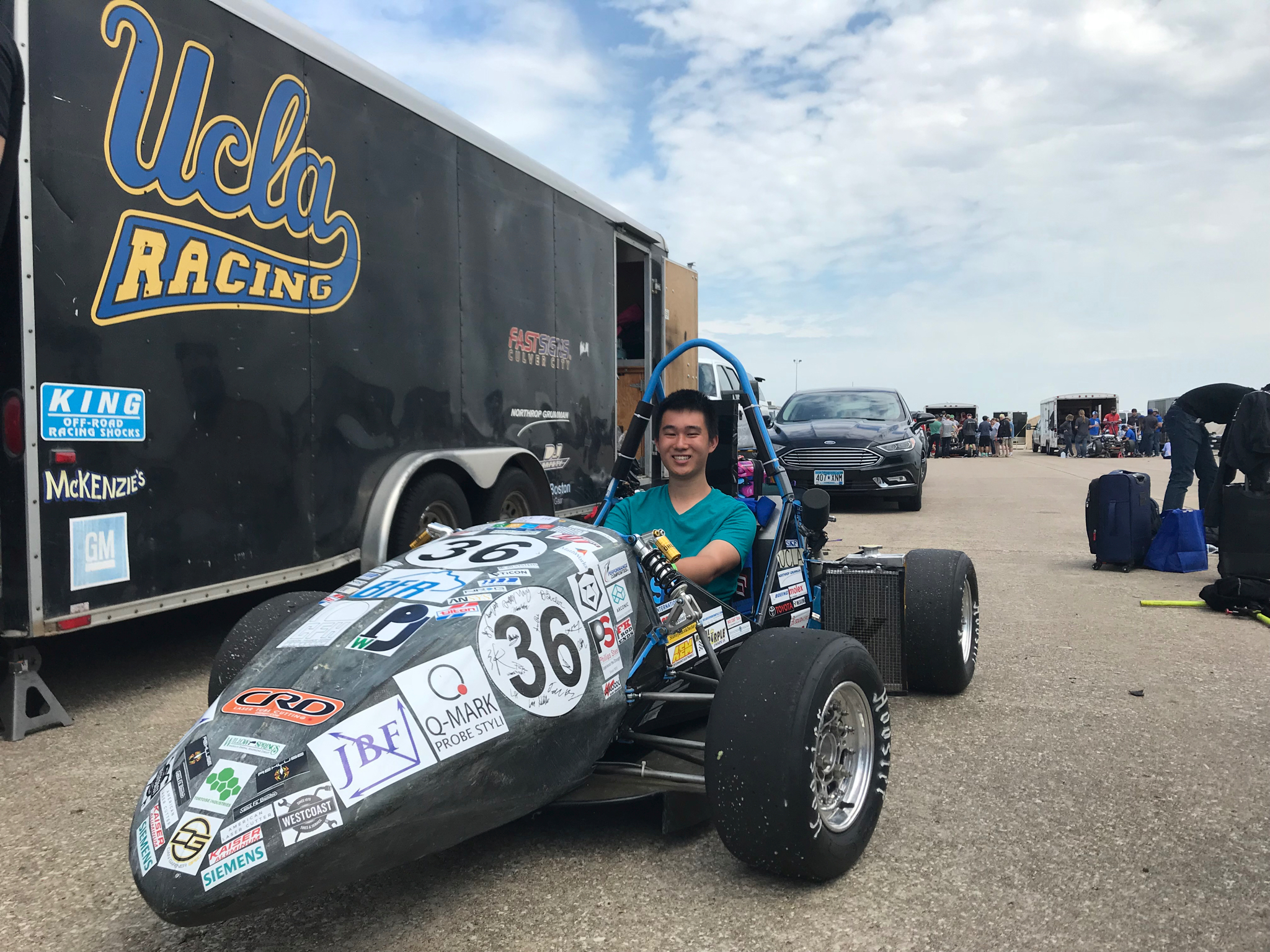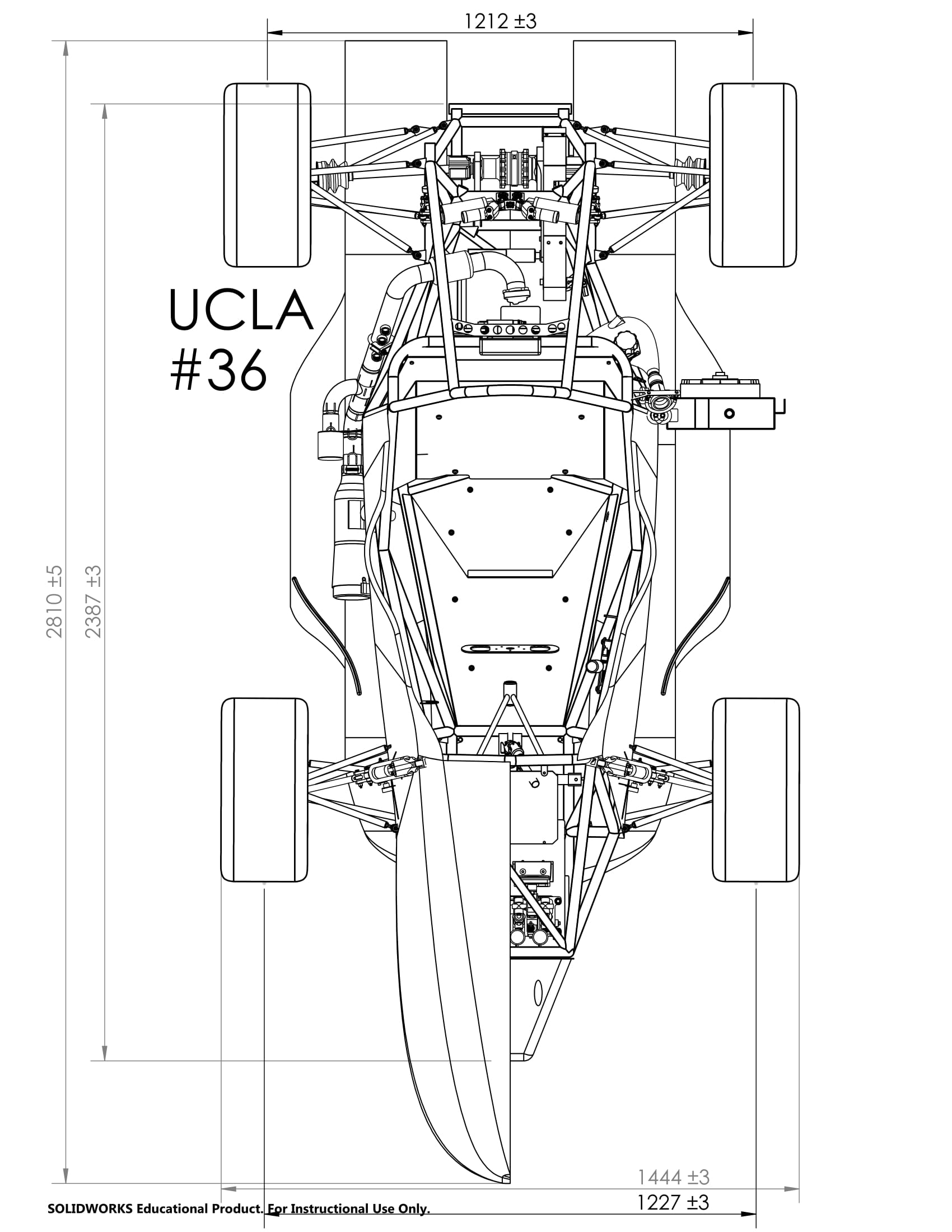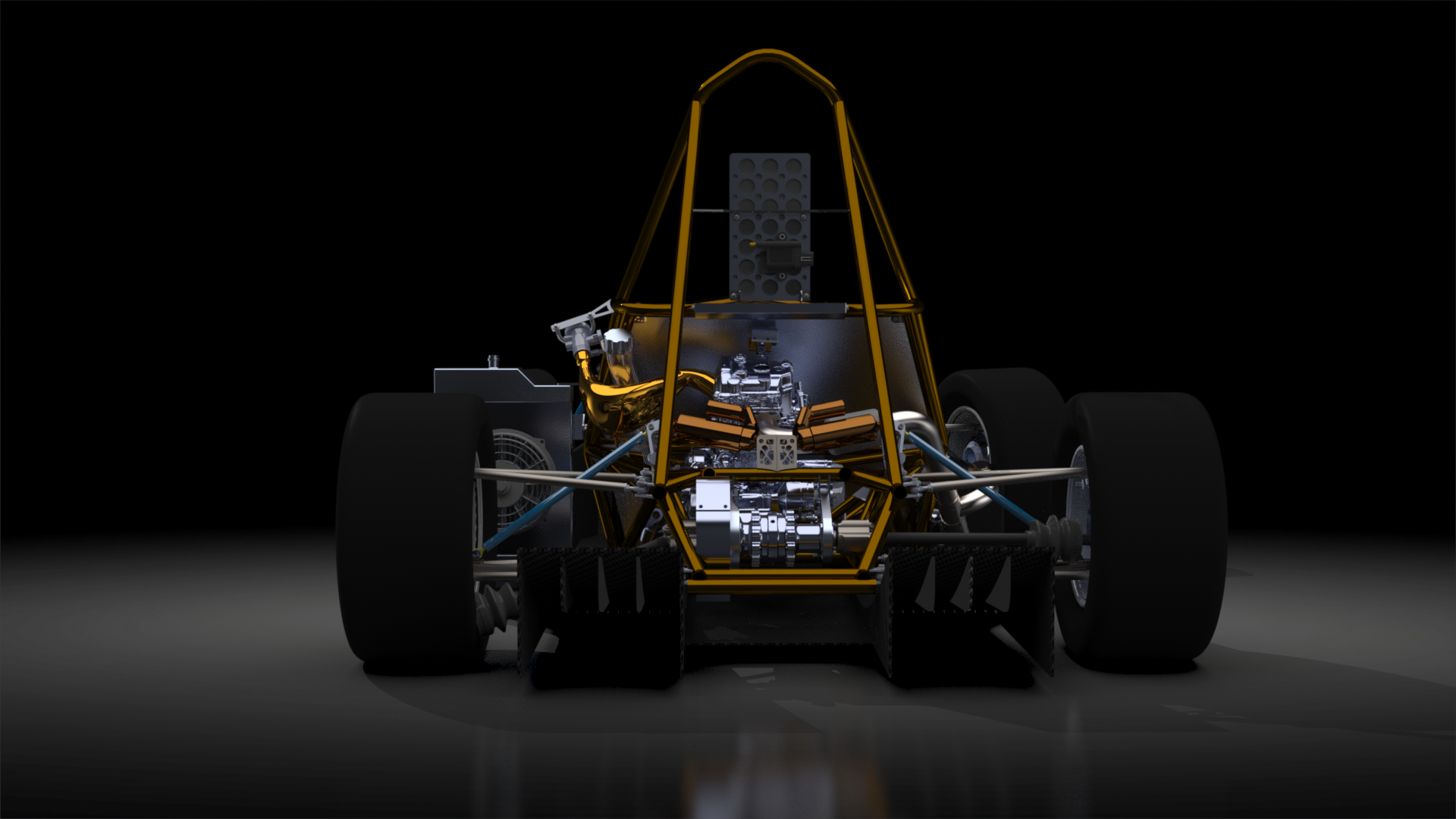Bruin Formula Racing
Technical Director, 2017-2018

The MKIV featured the introduction of a new aerodynamics team for the first time, as well as an expansion of composite elements. We also shed some more weight, with a final dry weight of 400 pounds. Small changes were made in each subsystem, with main focuses on weight optimization and better geometries. Focus also given to speeding up our testing timeline. A focus on powertrain reliability resulted in significantly more run time of the car. We also starting working with Optimum G Suite, a vehicle kinematics package. At competition, we passed tech Thursday midday, the earliest we had ever completed this rigorous inspection. We competed in skidpad and acceleration for first time before powertrain/ECU issues sidelined car for rest of competition. We briefly participated in endurance before ECU/EFI issues prevented the car from completing a single lap. In the end we finished 47th overall, with most improvements coming in presentation event.

Thought on being Technical Director
While certainly the most work, directing the team was also the most rewarding. Being in charge of the overall vehicle, and seeing the car unfold was really inspiring. At the beginning of summer, I mainly focused on determining overreaching subteam goals. Mainly, we wanted to be able to back up our designs better, from both a data perspective, as well as a simulation perspective. The second goal was to reduce weight where we could, in anticipation of the addition of a new undertray. I spent the summer learning especially how suspension worked, as well as familiarizing myself with all the other subsystems on the vehicle. I also started reaching out to sponsors for possible donations or other assistance. I spent a lot of time just staring at the full vehicle assembly in Solidworks. We had established an aggressive design and manufacturing cycle which was supposed to give us 8 weeks of testing. I would say everything worked out fairly well– we got about 6 weeks of testing time in. The biggest challenges were composites, for the sheer amount of manpower needed, as well as the debacle of getting things welded. Not being able to weld is a huge disadvantage for our team. We were lucky enough to have a great welding sponsor, but he worked on his schedule, not ours– and such we were a bit at the mercy of him. We also had an issue with a sponsor where our parts were not CNC’d for over 5 months, and then we lost communication before we got our parts back. These incidents relate to one of the challenges of leadership. How do you make up for things that are out of your control? While blame certainly couldn’t be pointed, someone still has to fix the problem. Collectively, the challenges fall under the “we’re doing everything we can but its still not enough” category– and often these challenges can only be met with more perseverance and creative solutions.
 As technical director I took on a lot of roles I wouldn’t have necessarily expected to. A lot of those were with the team’s image– I worked really hard on the aesthetics side and media creation. I created t-shirts, posters, and renders for the car. I also worked a lot with sponsors of all different sorts, from chassis to welding, to tuning. Technical directors have the unique position of being responsible for everything and yet nothing. While every issue was usually “someone else’s problem”, namely another lead, in the end they were all my problems. This led to me having to delve almost every subsystem, from coordinating chassis tube profiling file preparation to designing mounting for aerodynamics, to still having to fix the problems with the engine– in the end I got a taste of problems from every subsystem.
As technical director I took on a lot of roles I wouldn’t have necessarily expected to. A lot of those were with the team’s image– I worked really hard on the aesthetics side and media creation. I created t-shirts, posters, and renders for the car. I also worked a lot with sponsors of all different sorts, from chassis to welding, to tuning. Technical directors have the unique position of being responsible for everything and yet nothing. While every issue was usually “someone else’s problem”, namely another lead, in the end they were all my problems. This led to me having to delve almost every subsystem, from coordinating chassis tube profiling file preparation to designing mounting for aerodynamics, to still having to fix the problems with the engine– in the end I got a taste of problems from every subsystem.